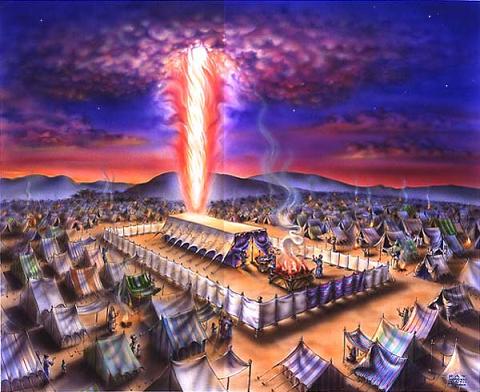by Joy Scott, Am Haskalah Congregant
In last week’s Torah Parsha (MISHPATIM), we were provided with a list of dozens of commandments and prohibitions, as spoken by God to Moses; and, subsequently to the Israelites. This week’s Parsha (TERUMAH) seems, at a first reading, to comprise another detailed list from God to Moses. This time God presents an enumeration of the items required for the construction of the ‘MISHKAN’ (Sanctuary) “for God to dwell within them” (1). The structure must be built, so that it could readily be dismantled, transported, and reassembled, as the people journeyed in the desert.
God said to Moses: “ Speak to the children of Israel, and have them take to Me, an offering; from every person whose heart inspires him to generosity, you shall take My offering” (2). The first offering is gold, silver, and copper. The word ‘offering’ is specifically noted as singular, so that each person could donate, according to his or her financial situation. This theme of fairness, without judgment is one that dominates Jewish thought.
Immediately after listing the metals to be brought, the Parsha lists the colors of the yarns, to be woven into curtains: “blue, red, and purple” (3). Many rabbinical scholars place a precise meaning to these colors: Red is often associated with women. The color of blood, it is naturally connected with a women’s cycle. Blue, the color of the single string of the tallit; and purple is the mixture of the two colors together. “This serves as a reminder that it is not only the unique ways in which we seek God; but, also what we share in that approach, that is important” (4).
The Tabernacle, the Israelites created in the desert was a sacred place, dedicated to God, with the Ark of the Covenant, the ‘Ten Commandments”, and elaborate décor. Up until this point in the Torah, we read how our ancestors prayed to God in fields, by bodies of water, in the desert; and at the bottom of a mountain.
Our sages claim that in leaving Mount Sinai, the people were fearful that their connection to God might fade, as they moved onward in their journey. They needed assurance that God would be with them. Therefore, God instructs them to build the Sanctuary – – -not for God to dwell inside; but, to serve as a tangible symbol of God’s Presence (5).
The former slaves receive a small selection of colors, as their first step in their own capacity to flourish as a free nation. They learn to feel what their heart instructs them. Building the Sanctuary unleashes their spirits, and opens their own power to create what is most practical for them. No longer suppressed by the yoke of oppression, they can begin to weave an inspired tapestry, which will bring the Sacred into the midst of their community.
We, too, inherit the instruction for our generation, and generations to follow, to encounter Judaism anew; and, create a beautiful place in our hearts and in our minds, for God to dwell in our lives.
FOOTNOTES:
(1) Exodus (25:8)
(2) Exodus (25:2)
(3) Exodus (25:4)
(4) The Torah: A Modern Commentary
(5) A Commentary on the Book of Exodus (Jerusalem: Magnum Press)
